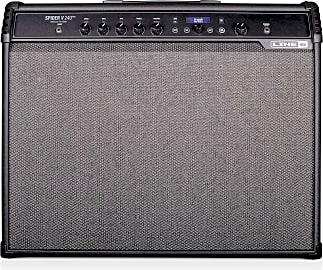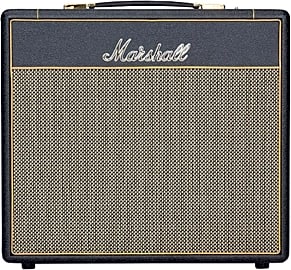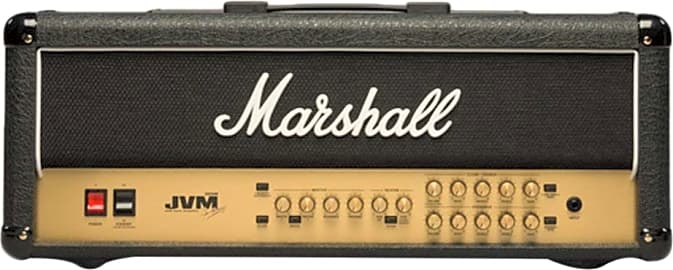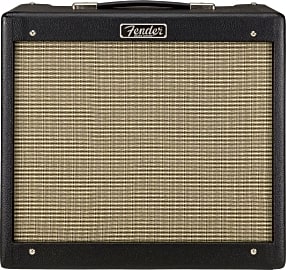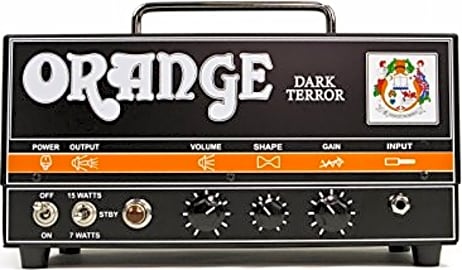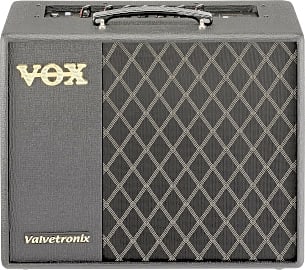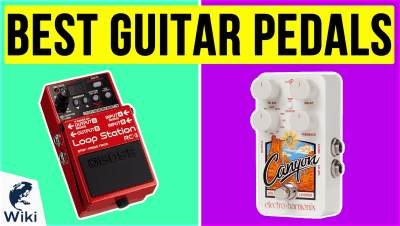The 10 Best Guitar Amps

This wiki has been updated 41 times since it was first published in September of 2015. Although none of these selections can be turned up to 11, we are pretty confident that one of the excellent guitar amps on our list will deliver the perfect volume level and quality of tone for whatever venue or style you need to play. We've included both combo and head models, and ranked them here by their tonal expressiveness and flexibility, durability, control options, and ease of use. When users buy our independently chosen editorial choices, we may earn commissions to help fund the Wiki.
Editor's Notes
February 23, 2021:
Our latest update introduces a mix of modern and vintage models to complement the diversity of our existing lineup. We replaced the Marshall JCM 900 with the much smaller Marshall SV20C Studio Vintage combo, as our list already included the more versatile Marshall M-JVM-205H-U Head. The new addition is perfectly adequate for close stage-monitoring purposes, but offers vintage looks and tone to balance our more modern-styled selections.
In a similar vein, we opted to replace the Marshall AS100D Combo with the classic Fender Blues Junior IV, as we feature many like the former on our dedicated acoustic amplifier page. The all-valve Fender surprises with its volume and clarity, despite outputting just 15 watts of power, and has modified circuitry, boosting its frequencies to give a more full-bodied sound.
Bringing our update firmly into the 21st century is the Line 6 Spider V 240 MkII. Typically for this progressive brand, it includes over 200 modeled tones and pedals, that are as close to the real thing as you are likely to get and at a fraction of the cost of buying multiple devices. All its settings can be stored to its memory, and it's worth investing in the dedicated FBV foot pedal if you want to get the most out of this amplifier when performing live.
April 02, 2019:
Given how flexible it is, it was a no-brainer to add the Vox AC30C2 to our list. It just has too much to offer to too many guitarists to consider anything else for the position. We also consider it a more complete option than certain amp heads, as the fact that it's a combo means buyers can start playing immediately with a reliable quality of sound. Some players will surely disagree, believing instead in the general superiority of heads over combos, but that's just fine with us.
The Orange AD30, while excellent, lacks the versatility of the Vox combo. As a head, it's a bit less immediate, and its tone, while decent, doesn't quite match that of any models listed above it.
One of the most notable additions comes from Roland, whose JC-120 offers a tone that's become ubiquitous on the indie rock scene. That, combined with its convenient wheels for portability, necessitated its rise to the top three.
Special Honors
Acorn Custom Amps, Combos, and Effects Boasting an impressive range of handmade amp heads and combos, this Atlanta, GA-based company creates high-quality equipment that is reassuringly expensive, without breaking the bank. With attractive wood finishes, their amps are as distinctive-looking as they are sounding, achieving their unique tone using stripped-down circuitry and high-quality tubes and components. acornamps.com
Denver Amp Works Based on legendary amplifiers, like Fender's legendary Blackface and Princeton models, this company modifies the circuitry and adds excellent Fluxtone speakers to order. It then encases the whole system inside beautiful custom-made wooden cabinets or wraps them in their own uniquely-colored and rugged coverings, to result in a combined visual and aural impact at once. denverampworks.com
A Boy's First Amp
I got the starter kit with the nylon acoustic and all its trappings, and I hated it.
Most guitarists begin their studies on an acoustic guitar, usually a Spanish-style guitar with nylon strings and a small, lightweight body. The nylon strings are a little more traditional and a bit easier to depress with small fingers for most young guitarists, or for any guitarist who hasn't yet built up the hand strength to handle steel.
He or she might even graduate to an acoustic guitar with steel strings long before ever obtaining an amplifier for the acoustics in question, let alone an electric guitar to plug into it. And who are the heroes of the guitar? For the last 50 years it's been Jimi Hendrix, Eric Clapton, Jimmy Page, and Tom Morello, to name just a few innovative names. All of these players made their reputations on electric guitars pumping through amplifiers, and at least one of them–or one like them–is likely the reason you picked up a guitar in the first place.
When I started playing, all I wanted was an electric guitar. I got the starter kit with the nylon acoustic and all its trappings, and I hated it. It had no edge, no danger. Then, after a year or so of saving, I bought some Frankenstein's monster of a guitar with parts from a dozen different breeds and a tiny little nameless amp to go with it.
It worked like all amps: the guitar in my hands translated the vibrations from its strings through magnetic pickups into a voltage that traveled through the guitar's wiring and out the main 1/4" cable, then the amp picked up the signal and sent it through a coil of wire around a much larger magnet than those in the pickups, and the vibrations of that magnet shook the cone of the speaker, producing sound. The specific vibrations corresponding to those voltages created specific frequencies of vibration through the air, and my 10-year-old ears were hooked.
No Amp Too Small
If you're getting your amp for the purposes of playing out with a band, it's very tempting to invest in a large amplifier, whether that means a big combo or a half-stack (don't even mention a full stack). I get it; it's what the pros use when they're rocking out at festivals. The reality there is that the vast majority of the time, whenever you see a guitarist with a wall of sound, it's comprised mainly of dummy cabs with no actual speakers. It's for the look.
In reality, arenas and festival grounds are the only places where anything bigger than a half stack would make sense. In smaller venues, the problem is always the same: amps can't be louder then the drums or the vocals. Listen to any good recording of your favorite bands and you'll notice that the kick drum, snare drum, and vocals are the highest in the mix. If you don't replicate this live the songs sound lost and washed out.
Listen to any good recording of your favorite bands and you'll notice that the kick drum, snare drum, and vocals are the highest in the mix.
Wherever you play you're going to run into one of three sound setups: a full PA, a partial PA, or no PA capacity beyond vocal mics. The PA is the primary sound system in any venue. A full PA has the board space and amplification capabilities to allow a sound engineer to apply a dedicated microphone to every instrument, amplifier, and drum head, as well as the cymbal spaces.
A partial PA is harder to define, but it's essentially any PA system that doesn't have the capacity to mic your whole band. More often than not, in these situations, mics end up on the kick drum and snare drum for the reasons outlined above. In this case, it does help to have a little extra juice in your amplifier, but try to keep it tamed, nonetheless.
Then, there are the venues where all you get is a vocal mic or two, where you're left to curate your sound all by yourselves. This category accounts for the vast majority of places a young band will play, and if you can hone your tone here you can hone it anywhere. What's most important is that you keep your amps low enough to allow the drummer to play at about 80 percent intensity. That way, the audience can actually hear all those important vocals, and when your drummer kicks it up to 100 percent, and you stomp on your distortion pedal, the audience will actually feel a shift.
All this is to say that you don't need to worry about getting your hands on a large amp. Small amps perform better for the overall sound of your band in most venues, and any venue big enough for you to need more volume is going to mic your amp anyway, giving you all the juice you'd need. So, as you look at the amps on our list, you can evaluate them based on their EQ options, their effects, and, frankly, their look.
All Amped Up
Early guitar amplifiers didn't come around until the 1930s, spurred on by developments in electrolytic capacitors and rectifier tubes, as well as by an explosive interest in Hawaiian music and its metal lap steel guitars, which sounded best when miked or amplified.
Solid state systems grew in popularity in the 1980s and 90s, as the digitization of audio signals posed a more reliable and less expensive alternative to tube amplification.
By the 1950s, guitarists and audio engineers set about altering the sounds of these amplifiers, employing effects, intentionally overdriving the amps to create a natural distortion, and more. In the mid 1960's The Kinks famously took razor blades to the grilles of their amps to create a unique distortion effect.
Solid state systems grew in popularity in the 1980s and 90s, as the digitization of audio signals posed a more reliable and less expensive alternative to tube amplification. In recent years, however, many guitarists have been willing to fork over a little extra scratch to get their hands and their ears on the sounds of the past, on the warm tones that the computers can't seem to capture.



